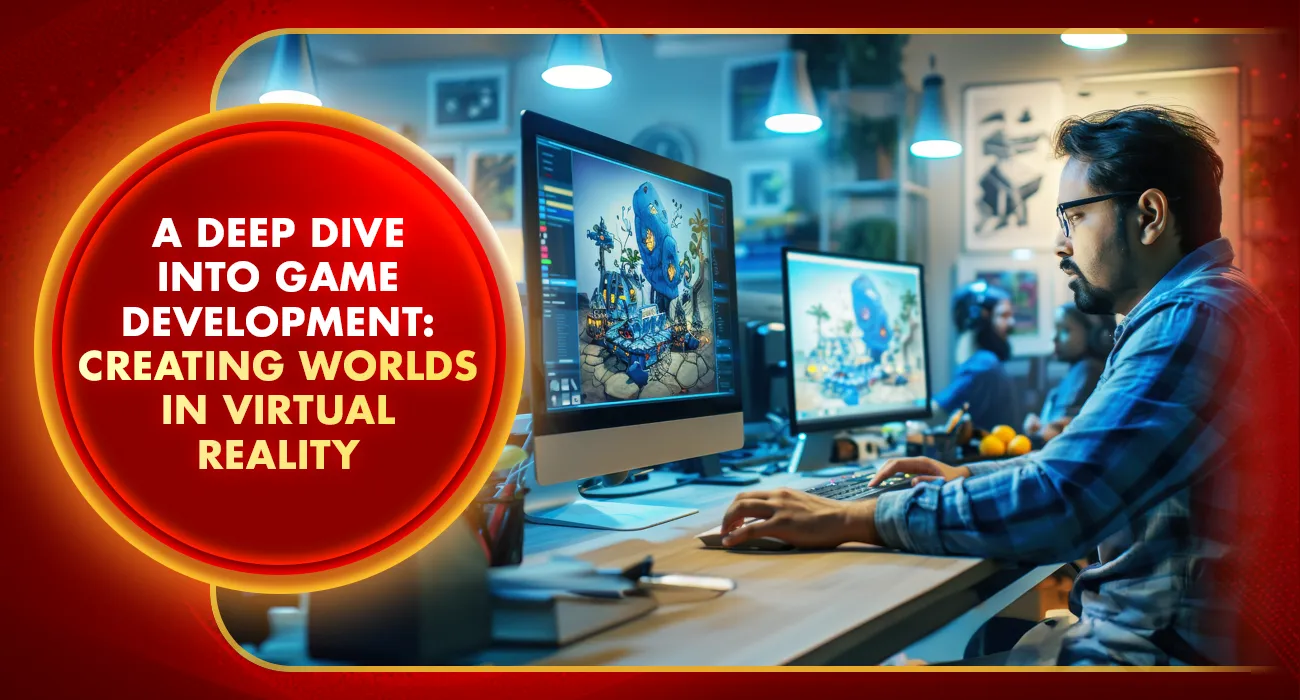Development in the virtual games world has increased sharply, and the most exciting frontier is virtual reality. Technology not only improves gaming but also allows for novel improvement, training, and collaboration techniques. This blog examines the intricacies of making VR games, with attention given to how immersive worlds come about to attract more players.
What is Virtual Reality?
Virtual reality is an interactive, computer-generated environment that simulates a physical presence in real or imagined worlds. VR headsets and motion controllers allow one to participate intimately in an environment that would otherwise never be touched by any medium other than this. The aim of designing VR games is to create a fabulous world so that the player can go into it, interact with it, and become a part of it.
The Game Development Process
- Conceptualization
Every game begins as an idea. Game developers come up with themes, from the story to the type of play and even the aesthetic appeal of the virtual scene. This is especially important in VR, which has everything to hang on to what viewers see and experience within their surroundings. Meanwhile, developers have to think of the physical space occupied by the player while creating an experience for it to maximize this ability.
- World Building
Once all that is done, it becomes the setting for world-building, whereby everything in a game is generated, from the environment to the characters and even the objects. From minute details within 3D modeling software to finer aspects of the virtual world, every single detail- texture, light, and physics – has been honed to perfection to bring them to life.
For instance, in virtual games for office, producers need to generate all the environments, simulating common working spaces. In this context, for example, a gamer may hold virtual meetings or work on a project as if they were in the same room. Such virtual office games rely very much on the degree of detail and the realism of contacts.
- Programming and Interactivity
Once all the visuals are established, programming game mechanics would require getting the developers to write the code for how players interact with the world and how that world reacts to players. The VR version of these would require very intuitive controls, allowing for immersion. In developing, developers often use motion capture technology, further enhancing character movements and portraying interactions as more natural-like.
- Testing and Iteration
Game development is an iterative process, especially in virtual reality. Testing becomes very important in the identification of issues that surround gameplay, graphics, and, more importantly, user experience. The developers take the suggestions from the testers and apply the necessary changes so that the final output is not just enjoyable but also feasible. Testing VR games also requires a particular interest in comfort and motion sickness, as poorly designed interactions can provide players with negative experiences.
- Launch and Post-Launch Support
Once polished, the game is ready for release. Developers often use various marketing tactics, such as social media and platforms themselves. Support is also very important after the actual launch; for example, developers might issue patches to fix bugs or add new content based on user feedback.
Future of Virtual Games and VR Game Development
The more that technology evolves, the more capabilities can be brought to play in VR game development to improve the social setting of virtual games. Players will now be allowed to connect and interact in shared spaces. As remote work becomes the rule, virtual games in the office environment will increasingly be in demand, and VR will be a vital tool for collaboration and productivity.
Creating virtual worlds is very challenging but totally rewarding. It is an art of creativity combined with technology and user experience design in collaboration to create immersive experiences that transport a person into new realms. But looking forward, platforms like Khelraaja are all set to play a huge role in the shaping of virtual gaming land – pushing beyond the boundaries of what’s possible within this thrilling medium. That is the beginning of this all-important journey of game development in VR and virtual games industry – and we just can’t wait for more!
Also read: Virtual Games and Science of Immersion: What Makes these games Engaging in 2025






